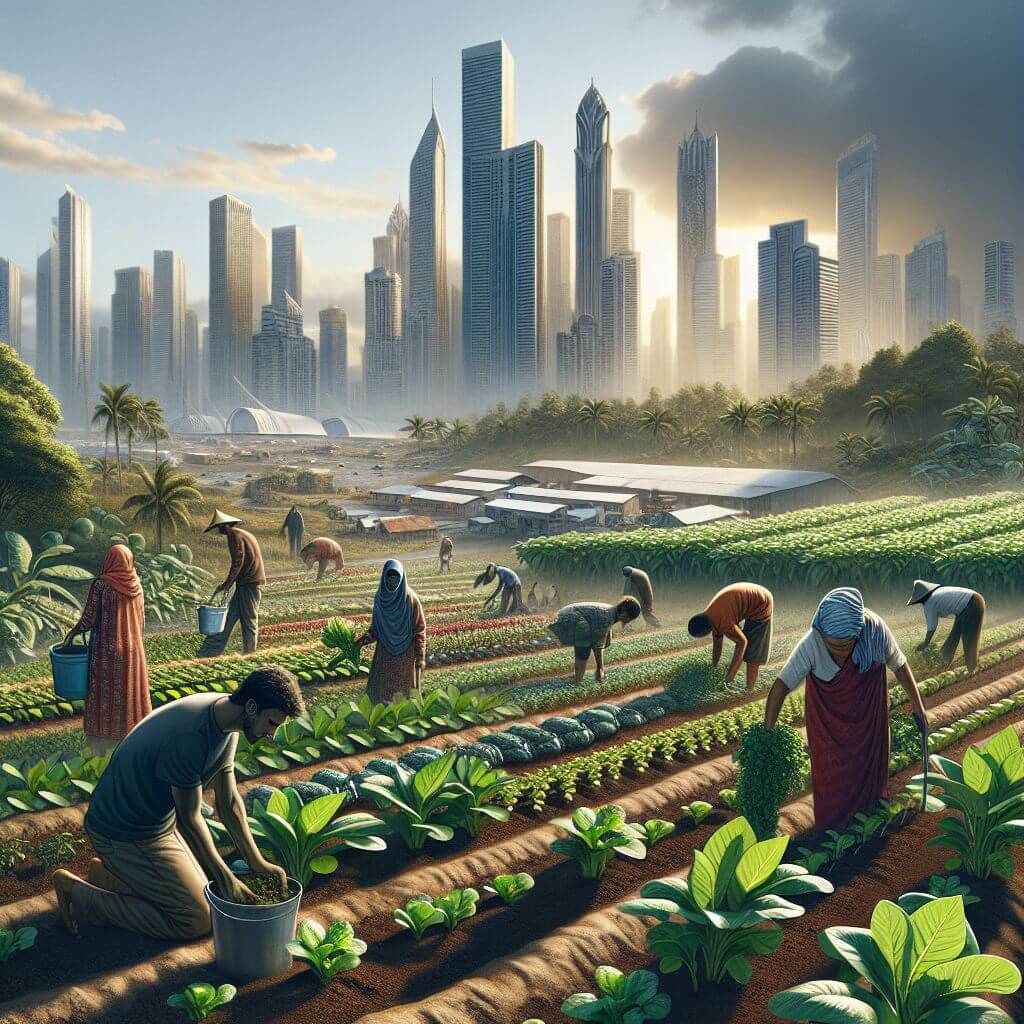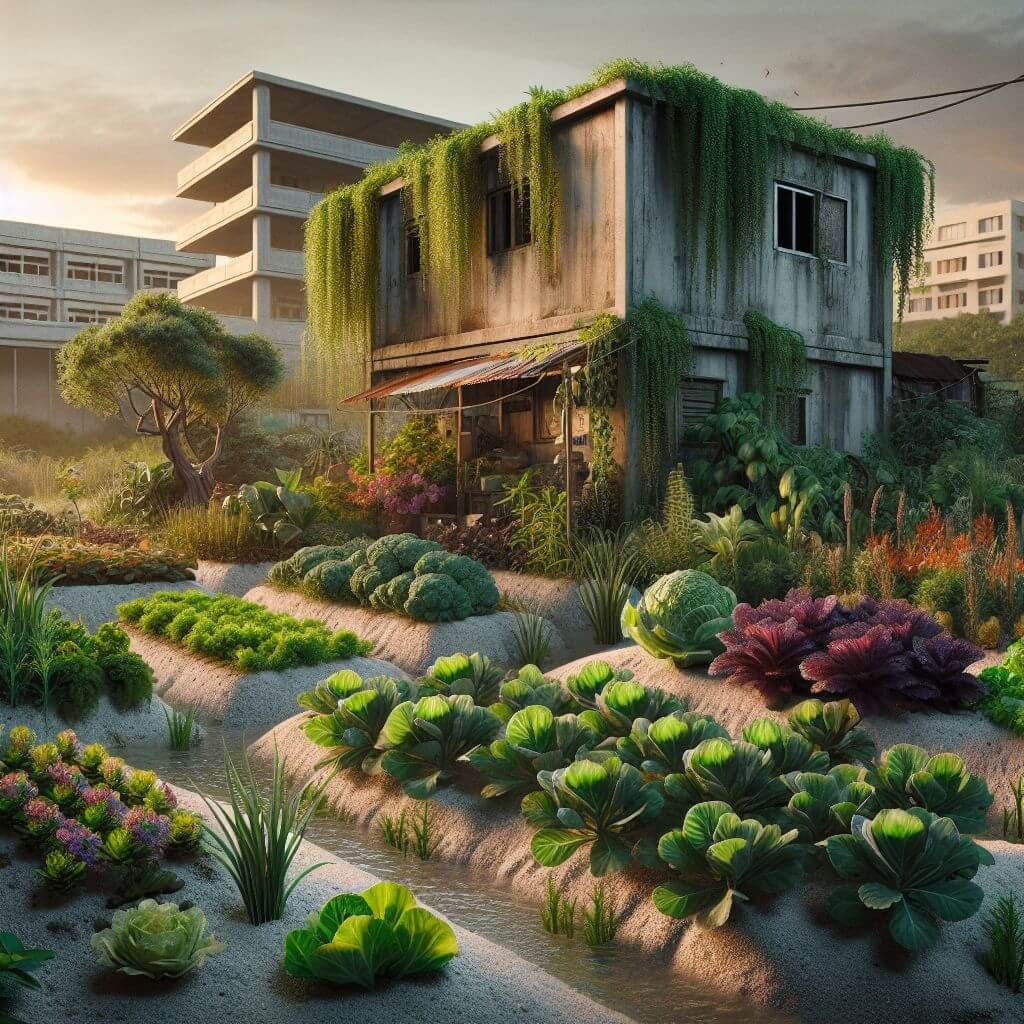
Key Takeaways: Thriving in a Salt-Infused Terrain
- Discover the essential steps to assess and manage saline soil for optimal plant growth.
- Learn which vegetables, fruits, and herbs are best suited for high-salt environments.
- Explore soil amendments and irrigation techniques tailored for saline soils.
- Gain insights from real-life success stories of coastal gardening and farming.
- Understand the importance of regular soil testing and proactive salinity management practices.
Unlock the Potential of Saline Soils
Imagine a garden where the crunch of fresh vegetables and the sweet fragrance of ripening fruits defy the odds of a salty earth beneath them. This isn’t just wishful thinking; it’s a reality for those who understand how to work with saline soils. With the right approach, even the most salt-affected soils can be transformed into productive growing spaces.
Understanding Saline Soil Basics
First things first, let’s get to the root of the problem. Saline soils contain high levels of soluble salts, which can hinder plant growth by affecting the soil structure and nutrient availability. It’s a common challenge in coastal areas where seawater intrusion or salt-laden winds add to the soil’s salinity. But worry not, with a little knowledge and effort, we can turn the tide in our favor.
The Severity of Soil Salinity Issues
Soil salinity isn’t just a minor inconvenience; it’s a global concern that can lead to decreased crop yields and even render land unusable for agriculture. Besides that, it’s a growing issue, exacerbated by factors like poor irrigation practices and climate change. But let’s not dwell on the problem—instead, let’s focus on the solutions.
Salinity can vary greatly, and it’s crucial to understand just how salty your soil is before you start planting. Some plants can tolerate a bit of salt, while others will struggle or even fail to thrive. It’s all about finding the right balance and choosing crops wisely.
Tackling Salinity: First Steps
Before you can fight salinity, you need to know your enemy. The first step is to test your soil’s salt content. It’s a simple process that can be done with a soil testing kit or by sending a sample to a local laboratory. Knowing the salt levels will guide you in making informed decisions on how to manage your garden.
Assessing Your Soil’s Salt Content
When you test your soil, you’re looking for the electrical conductivity (EC) value, which tells you how much salt is present. An EC value higher than 4 dS/m indicates that you’ve got some work to do, as most plants prefer levels lower than this. But don’t let high numbers discourage you; there are ways to flush out excess salts and add amendments that can help your plants get the nutrients they need.
And remember, soil testing isn’t a one-time deal. Regular check-ups are crucial because salinity can change with time and different weather conditions. It’s like a health check for your garden, ensuring it stays in top shape all year round.
Simple Adjustments for Immediate Impact
Once you’ve got a handle on your soil’s salinity, it’s time to make some changes. Start with improving drainage, as good water flow can help wash away some of the salts. Also, consider adding organic matter like compost or well-rotted manure. These can improve soil structure, increase nutrient availability, and even help plants cope better with salty conditions.
Another quick win is mulching. A generous layer of organic mulch will conserve moisture, reduce salt build-up on the soil surface, and gradually improve the soil as it breaks down. And let’s not forget about selecting the right plants, which we’ll dive into next.
Choosing the Right Crops for Salty Situations
Not all heroes wear capes; some come in the form of salt-tolerant plants. These resilient varieties have adapted to thrive in salty soils, making them your best allies. When selecting crops, consider those that naturally cope well with high salinity, and you’ll be setting your garden up for success.
Vegetables that Brave the Brine
When it comes to vegetables, some are just built tougher than others. Spinach, beets, and kale are among the champions of saline soil, showing impressive tolerance to salt stress. These leafy greens not only survive but can flourish, bringing color and nutrition to your table.
Flourishing Fruits in the Face of Salinity
Fruit trees might seem like a tricky bunch, but there are still options for the salt-savvy gardener. Figs, olives, and date palms can take the salt in stride, offering sweet and savory treats from your own backyard. Just remember, proper care and the right location can make all the difference.
Hearty Herbs for High-Salt Environments
Herbs are the secret ingredient to any garden, and some are surprisingly salt-tolerant. Rosemary, thyme, and oregano can handle a sprinkle of salt, making them perfect for coastal climates. These aromatic wonders will add zest to your dishes and resilience to your garden.
Innovative Growing Methods

In the fight against salinity, innovation is key. By exploring new growing methods and embracing change, we can outsmart the salt and create thriving gardens in the unlikeliest of places.
Soil Amendments and Their Roles
Amending saline soil isn’t just about adding nutrients; it’s about changing the soil’s very nature to support plant life. Gypsum, for instance, is a soil amendment superhero, helping to displace sodium ions and improve soil structure. Compost and organic matter play crucial roles, too, by enhancing the soil’s ability to retain water and nutrients.
Water Wisdom: Irrigation for Saline Soils
Irrigation in salty soils is a delicate dance. Overwatering can lead to salt accumulation, while underwatering can stress plants already struggling with salinity. Drip irrigation is a smart move here, delivering water directly to the roots with precision and care. It’s all about giving your plants a drink without adding to the salt burden.
Case Study Spotlight: Coastal Success Stories
Real-world examples shine a light on what’s possible, even in the face of adversity. Let’s take a look at some success stories that prove saline soils can be productive.
Community Victory Gardens in High Saline Soils
In one coastal community, a group of intrepid gardeners turned a barren plot into a lush vegetable oasis. By incorporating raised beds filled with amended soil and selecting salt-tolerant plants, they overcame the challenges of salinity. Their garden not only provides fresh produce but also serves as a beacon of hope and a model for others to follow.
Commercial Farms Turning Tides Against Salinity
On a larger scale, a commercial farm near the coast adopted innovative practices to reclaim salt-affected land. By implementing strategic crop rotation, utilizing salt-tolerant rootstocks for fruit trees, and carefully managing irrigation, they’ve seen yields increase year after year. This farm’s story is a testament to the power of adaptability and perseverance.
Take inspiration from these stories and remember that with the right approach, saline soils can be transformed into gardens of abundance.
These examples aren’t just heartwarming; they’re instructive. They show us that with community effort, scientific understanding, and a dash of creativity, even the most challenging soils can be coaxed into productivity.
A Green Thumb’s Guide to Salt Management

Managing saline soils is an ongoing process, but with a few key strategies, you can stay ahead of the salt and keep your garden thriving. Learn more about saline soil solutions to ensure the success of your coastal gardening efforts.
Regular Soil Testing and Monitoring
Keep a close eye on your soil’s salinity by testing it regularly. This will help you track changes and adjust your management practices accordingly. It’s essential to be proactive rather than reactive when it comes to salt levels in your soil.
Proactive Practices to Keep Salinity in Check
Aside from choosing the right plants and amendments, there are other practices to keep in mind. Cover crops can help prevent salt build-up, while proper garden layout and design can maximize natural rainfall and minimize the impact of salt spray. It’s about creating a garden environment where plants can not only survive but thrive.
Remember, every garden is unique, and what works for one may not work for another. Experiment, observe, and adapt—that’s the mantra of the successful saline soil gardener.
FAQ: Navigating the Salt
What Makes Soil Saline?
Soil becomes saline primarily due to the presence of high levels of soluble salts, often sodium chloride—yep, that’s table salt. This can happen through natural processes like the evaporation of saline groundwater or through human actions like improper irrigation practices. Coastal areas are especially prone to salinity due to seawater intrusion and salt spray from the ocean.
How Can I Test My Soil for Salinity?
Testing your soil’s salinity is a breeze. You can purchase an affordable soil salinity test kit from your local garden store or online. If you want a more comprehensive analysis, take a soil sample to an agricultural extension service or a professional soil-testing lab. They’ll give you the lowdown on your soil’s salt levels and provide recommendations for improvement.
What Are Some Salt Tolerant Crops?
When it comes to standing up to salt, some crops are natural-born fighters. Here are a few champions:
- Vegetables: Beets, spinach, and kale have got what it takes to handle the salt.
- Fruits: Figs, olives, and date palms can sweeten up even the saltiest of soils.
- Herbs: Rosemary, thyme, and oregano don’t just flavor your food; they laugh in the face of salinity.
These plants aren’t just survivors; they can thrive and provide bountiful harvests in salty conditions. For more insights on adapting your urban survival garden to challenging environments, explore our in-depth guide.
How Does Irrigation Affect Soil Salinity?
Irrigation can be a double-edged sword when it comes to soil salinity. On one hand, it’s necessary for plant growth, but on the other, it can contribute to increased salt levels if not managed correctly. Using high-quality water and efficient irrigation methods like drip or subsurface irrigation can help minimize the risk of salt build-up.
Can Saline Soils Be Reclaimed for Agriculture?
Yes, saline soils can be reclaimed, and it’s a process that’s both rewarding and environmentally beneficial. Techniques such as leaching excess salts, improving soil drainage, and applying soil amendments like gypsum can rehabilitate salty soils. It takes time, effort, and patience, but it’s entirely possible to turn a saline wasteland into a verdant garden.
Congratulations! You’re now equipped with practical strategies to effectively manage saline soils, and transform what may seem like a gardening hurdle into a triumph. But it doesn’t stop here, dear green thumbs. Nurturing your garden is an exciting journey of continual learning and adaptation. For those who wish to delve deeper, are curious about specific crops, or simply ready to embrace the challenge of seaside gardening, let’s delve deeper. Your perfect, salty soil-ready seeds await at this treasure trove we’ve found for you. Just a click away, start your journey to a fruitful coastal garden now. Onwards to bountiful harvests!






